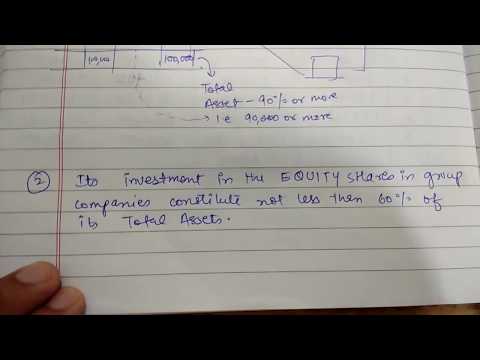

High turnover means that the company uses a small percentage of its assets each year to generate huge amounts of sales. However, it could be difficult to achieve high asset turnover if there are few assets to work with . This ratio may seem unnatural, but it is helpful when assessing how efficiently the assets of a business are being used. After all, the main reason for holding an asset is to help the company achieve a certain level of sales. To calculate your asset turnover rate, you must have your total assets and net sales numbers. If the ratio is less than 1, then it’s not good for the company as the total assets cannot produce enough revenue at the end of the year.
On the other side, selling assets to prepare for declining growth will result in an artificial inflation of the ratio. Artificial deflation can be caused by a company buying large amounts of assets, such as new technologies, in anticipation of growth. Finance Strategists is a leading financial literacy non-profit organization priding itself on providing accurate and reliable financial information to millions of readers each year.
Sectors like retail and food & beverage have high ratios, while sectors like real estate have lower ratios. The asset turnover ratio can be modified to analyze only the fixed assets of a company. But suppose the industry average ratio is 2 and a company has a ratio of 1.

For example, it would be incorrect to compare the ratios of Company A to that of Company C, as they operate in different industries. Yarilet Perez is an experienced multimedia journalist and fact-checker with a Master of Science in Journalism. She has worked in multiple cities covering breaking news, politics, education, and more.
Example of asset turnover
To use SharePoint’s content AI services — Syntex — organizations should determine their pain points and plan thorough end-user … In this equation, the beginning assets are the total assets documented at the start of the fiscal year, and the ending assets are the total assets documented at the end of the fiscal year. This indicates that for company X, every dollar invested in assets generates $4 in sales. INVESTMENT BANKING RESOURCESLearn the foundation of Investment banking, financial modeling, valuations and more. We would say that P&G has to improve its asset utilization to increase revenue generation through assets. So, if you have a look at the figure above, you will visually understand how efficient Wal-Mart asset utilization is.
A Small Business Guide to Ratio Analysis – The Motley Fool
A Small Business Guide to Ratio Analysis.
Posted: Fri, 05 Aug 2022 07:00:00 GMT [source]
The chances are that you will get a significantly poor asset turnover ratio. But it is all right because not all businesses will find this metric helpful. Average total assets refer to the average value of your long-term and short-term assets for at least the past two fiscal years or the previous fiscal year. This means that whether a company’s asset turnover ratio is good or poor would depend on its industry and the value of the ratio from the company’s previous records. Nevertheless, generally, an asset turnover ratio results that are higher than those in the same industry would indicate a company that is better at moving products to generate revenue.
Fixed Asset and Total Asset Turnover Ratio
Similarly, selling off assets to prepare for declining growth will artificially inflate the asset turnover ratio. In addition, several other factors such as seasonality can affect the asset turnover ratio of a company during accounting periods shorter than a year. Also, Target’s low turnover may also mean that the company uses ineffective tax collection methods.
- Investors use FAT ratio to compare companies within the same industry.
- Net sales are an important measure of a company’s financial performance because they reflect the actual revenue that the company is generating from its operations.
- They are considered as long-term or long-living assets as the Company utilizes them for over a year.
For example, quirky sales promotion techniques and offers to attract the right kind of customers. Go internet-independent.360 Assessment Conduct omnidirectional employee assessments. We strive to empower readers with the most factual and reliable climate finance information possible to help them make informed decisions. Our goal is to deliver the most understandable and comprehensive explanations of climate and finance topics.
Courses
As with other payroll accounting metrics, the asset turnover ratio is most effective when used to compare different companies in the same industry. While the asset turnover ratio should be used to compare stocks that are similar, the metric does not provide all of the detail that would be helpful for stock analysis. It is possible that a company’s asset turnover ratio in any single year differs substantially from previous or subsequent years.

The ratio may look distorted if a company has leased some of its assets. The ratio may look distorted if a company has sold off some of its assets. Companies with a higher FAT ratio are generally considered to be more efficient than companies with low FAT ratio. As such, the numbers indicate Walmart has higher sell-through rates on its inventory and makes better use of its assets. Indeed, Walmart has done well to expand its curbside pickup and delivery service for online ordering, leading to greater utilization of its stores. However, Target isn’t too far behind, especially when it comes to shipping packages to customers from its stores.
Similarly, the company is generating $0.71 for every $1 of total assets. Therefore, the fixed asset turnover ratio determines if a company’s purchases of fixed assets – i.e. capital expenditures – are being spent effectively or not. In general, an asset turnover ratio greater than 1 is good, as that means there is more than one dollar in sales for every dollar of assets. For example, telecommunications companies typically have large asset bases, so it takes more time to turn over these assets into revenue, and as such, their ratios are often less than 1. This is where the comparison to other companies within the same industry becomes helpful. If a company’s ratio is lower than most other companies within that industry, it needs to improve.

The company wants to expand its operations, and they have been looking for an angel investor. They have a meeting with one this year who has requested to know how well Brandon’s utilizes the company assets to produce sales. A high turnover ratio does not necessarily mean high profits, and the true measure of a company’s performance is its ability to generate profit from its revenue.
One way of putting those values into context is to use them to generate ratios. One ratio that analysts use to evaluate a company’s strength is the asset turnover ratio. Investors can use the asset turnover ratio to help identify important competitive advantages. If one company has a higher asset turnover ratio than its peers, take the time to figure out why that might be the case.
- An asset turnover ratio of 4.76 means that every $1 worth of assets generated $4.76 worth of revenue.
- We would say that P&G has to improve its asset utilization to increase revenue generation through assets.
- If the company’s industry has an asset turnover that is less than 0.5 in most cases and this company’s ratio is 0.9; then the company is doing well, irrespective of its low asset turnover.
The result should be a comparatively greater return to its shareholders. Sometimes investors also want to see how companies use more specific assets like fixed assets and current assets. The fixed asset turnover ratio and the working capital ratio are turnover ratios similar to the asset turnover ratio that are often used to calculate the efficiency of theseassetclasses. The total asset turnover ratio is a general efficiency ratio that measures how efficiently a company uses all of its assets. This gives investors and creditors an idea of how a company is managed and uses its assets to produce products and sales.
In this article, we will discuss the significance of the asset turnover ratio, how it is calculated, and how it can be used to make better financial decisions. We will also discuss how the asset turnover ratio can be used to compare companies and evaluate a company’s performance. Finally, we will look at how to use the asset turnover ratio to improve efficiency and profitability. Asset turnover is a key metric used to describe your company’s financial health. Your asset turnover ratio measures how effectively your company is using the fixed assets and liquid assets that it has to generate revenue.
LyondellBasell Could Be An Attractive Dividend Stock To Own In … – Seeking Alpha
LyondellBasell Could Be An Attractive Dividend Stock To Own In ….
Posted: Mon, 06 Feb 2023 08:00:00 GMT [source]
Financial Intelligence takes you through all the financial statements and financial jargon giving you the confidence to understand what it all means and why it matters. Unlike the initial equipment sale, the revenue from recurring component purchases and services provided to existing customers requires less spending on long-term assets. High Turnover → The company is implied to be purchasing long-term assets efficiently. In this lesson, we’ll explain total asset turnover and define each component of the formula.
Once you have numbers for https://1investing.in/ sales and average assets, divide the former by the latter to get the asset turnover ratio. After calculating the fixed asset turnover ratio, the metric can be compared across historical periods to assess trends. Similar to other finance ratios out there, the asset turnover ratio is also evaluated depending on the industry standards. That’s specifically because some given industries utilize assets much more effectively in comparison to others. Therefore, to get an accurate sense of a firm’s efficacy level, it makes sense to compare the numbers with those of other companies that operate in the same industry. To be more precise, the total asset turnover ratio calculates net sales as a given percentage of assets, in an attempt to outline how many sales are generated from each asset owned by the company.